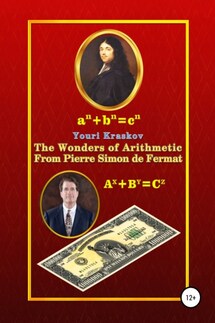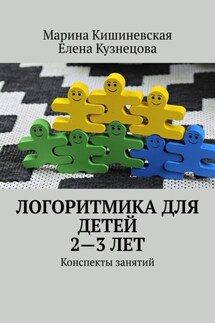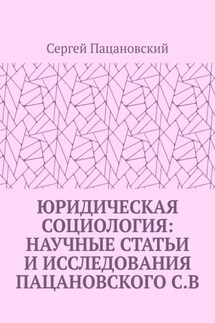The Wonders of Arithmetic from Pierre Simon de Fermat - страница 34
The second axiom has the same meaning as the first one in the Peano list, but is being specified in order to become a consequence of the new first axiom.
The third axiom is the new wording of Peano's second axiom. The notion of the natural row is given here more simply than by Peano where you need to guess about it through the notion of the “next” number. The fourth axiom is exactly the same as the third axiom of Peano.
The fifth axiom is the same as by Peano, which is considered the main result of the entire system. In fact, this axiom is the formulation the method of induction, which is very valuable for science and in this case allows to justify and build a count system. However, a count is present in one or another form not only in natural numbers, but also in any other numbers, therefore one more final axiom is needed.
The sixth axiom extends the basic properties of natural numbers to any numbers derived from them because if it turns out that any quantities obtained by calculations from natural numbers, contradict their basic properties, then these quantities cannot belong to the category of numbers.
Now arithmetic gets all the prerequisites in order to have the status the most fundamental of all scientific disciplines. From the point of view the essence of a count everything becomes much simpler and more understandable than until now. On the basis of this updated system of axioms there is no need to “create” natural numbers one after another and then “prove” the action of addition and multiplication for the initial numbers. Now it’s enough just to give names to these initial numbers within the framework of the generally accepted number system.
If this system is decimal, then the symbols from 0 to 9 should receive the status of the initial numbers composed of units in particular: the number “one” is denoted as 1=1, the number “two” is denoted as 2=1+1, the number “ three ” as 3=1+1+1 etc. up to the number nine. Numbers after 9 and up to 99 adding up from tens and ones for example, 23=(10+10)+(1+1+1) and get the corresponding names: ten, eleven, twelve … ninety-nine. Numbers after 99 are made up of hundreds, tens and units, etc. Thus, the names of only the initial numbers must be preliminarily counted from units. All other numbers are named so that their quantity can be counted using only the initial numbers.39
3.2.2. Axioms of Actions
All arithmetic actions are components of the definition the essence of the number. In a compact form they are presented as follows:
1. Addition: n=(1+1…)+(1+1+1…)=(1+1+1+1+1…)
2. Multiplication: a+a+a+…+a=a×b=c
3. Exponentiation: a×a×a×…×a=a>b=c
4. Subtraction: a+b=c → b=c−a
5. Division: a×b=c → b=c:a
6. Logarithm: a>b=c → b=log>ac
Hence, necessary definitions can be formulated in the form of axioms.
Axiom 1. The action of adding several numbers (summands) is their
association into one number (sum).
Axiom 2. All arithmetic actions are either addition or derived from
addition.
Axiom 3. There are direct and inverse arithmetic actions.
Axiom 4. Direct actions are varieties of addition. Besides the addition
itself, to them also relate multiplication and exponentiation.
Axiom 5. Inverse actions are the calculation of function arguments.
These include subtraction, division and logarithm.
Axiom 6. There aren’t any other actions with numbers except for






